CBSE Class 11 Maths Trigonometric Ratios and Identities – Get here the Notes for Class 11 Trigonometric Ratios and Identities. Candidates who are ambitious to qualify the Class 11 with good score can check this article for Notes. This is possible only when you have the best CBSE Class 11 Maths study material and a smart preparation plan. To assist you with that, we are here with notes. Hope these notes will helps you understand the important topics and remember the key points for exam point of view. Below we provided the Notes of CBSE Class 11 Maths for topic Trigonometric Ratios and Identities.
- Class: 11th
- Subject: Maths
- Topic: Trigonometric Ratios and Identities
- Resource: Notes
CBSE Notes Class 11 Maths Trigonometric Ratios and Identities
Candidates who are pursuing in CBSE Class 11 Maths are advised to revise the notes from this post. With the help of Notes, candidates can plan their Strategy for particular weaker section of the subject and study hard. So, go ahead and check the Important Notes for CBSE Class 11 Maths Trigonometric Ratios and Identities from this article.
Angle
When a ray OA starting from its initial position OA rotates about its end point 0 and takes the final position OB, we say that angle
AOB (written as ∠ AOB) has been formed. The amount of rotation from the initial side to the terminal side is Called the measure of
the angle.
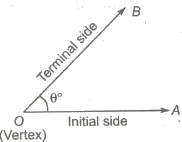
Positive and Negative Angles
An angle formed by a rotating ray is said to be positive or negative depending on whether it moves in an anti-clockwise or a clockwise direction, respectively.
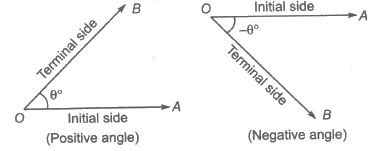
Measurement of Angles
There are three system for measuring angles,
1. Sexagesimal System/Degree Measure (English System)
In this system, a right angle is divided into 90 equal parts, called degrees. The symbol 1° is used to denote one degree. Each degree is divided into 60 equal parts, called minutes and one minute is divided into 60 equal parts, called seconds. Symbols 1′ and 1″ are used to denote one minute and one second, respectively.
i.e., 1 right angle = 90°
1° = 60′
1′ = 60″
2. Centesimal System (French System)
In this system, a right angle is divided into 100 equal parts, called ‘grades’. Each grade is subdivided into 100 min and each minute is divided into 100 s.
i.e., 1 right angle = 100 grades = 100g
1g = 100′
1′ = 100″
3. Circular System (Radian System)
In this system, angle is measured in radian.
A radian is the angle subtended at the centre of a circle by an arc, whose length is equal to the radius of the circle.
The number of radians in an angle subtended by an arc of circle at the centre is equal to arc/radius.
Relationships
(i) π radian = 180°
or 1 radian (180°/π)= 57°16’22”
where, π = 22/7 = 3.14159
(ii) 1° = (π/180) rad = 0.01746 rad

(iii) If D is the number of degrees, R is the number of radians and G is the number of grades in an angle θ, then
(iv) θ = l/r where θ = angle subtended by arc of length / at the centre of the circle, r = radius of the circle.
Trigonometric Ratios
Relation between different sides and angles of a right angled triangle are called trigonometric ratios or T-ratios
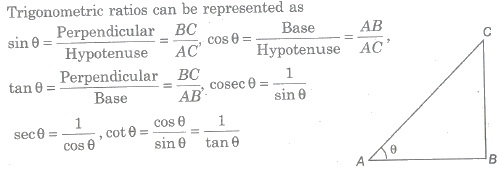
Trigonometric (or Circular) Functions
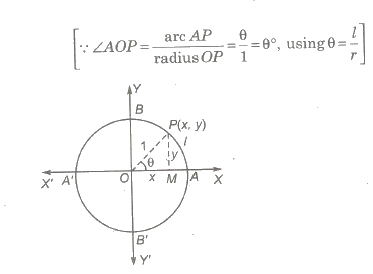
Let X’OX and YOY’ be the coordinate axes. Taking 0 as the centre and a unit radius, draw a circle, cutting the coordinate axes at A,B, A’ and B’, as shown in the figure.
Now, the six circular functions may be defined as under
(i) cos θ = x
(ii) sin θ = y
(iii) sec θ = 1/x, x ≠ 0
(iv) cosec θ = 1/y, y ≠ 0
(v) tan θ = y/x, x ≠ 0
(vi) cot θ = x/y, y ≠ 0
Domain and Range
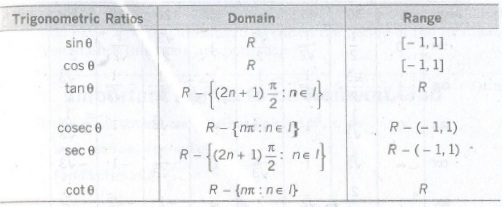
Range of Modulus Functions
|sin θ|≤ 1, |cos θ| ≤ 1, |sec θ| ≥ 1, |Cosec θ| ≥ 1 for all values of 0, for which the functions are defined.
Trigonometric Identities
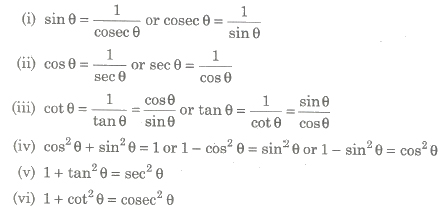
An equation involving trigonometric functions which is true for all those angles for which the functions are defined is called trigonometrical identity. Some identities are
Sign of Trigonometric Ratios

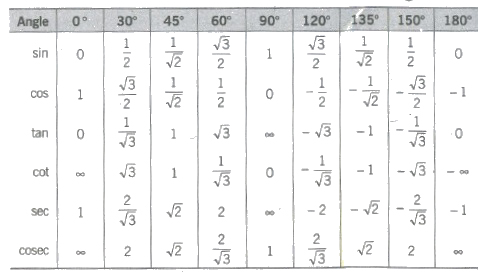
Trigonometric Ratios of Some Standard Angles
Trigonometric Ratios of Some Special Angles
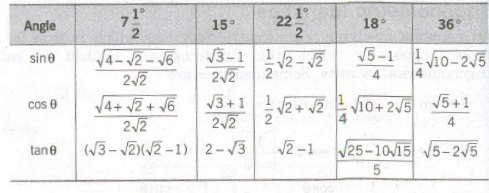
Trigonometric Ratios of Allied Angles
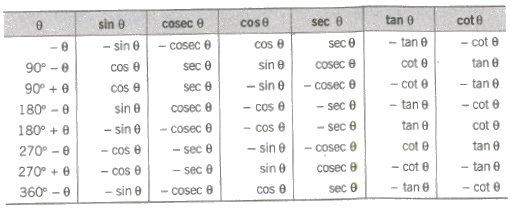
Two angles are said to be allied when their sum or difference is either zero or a multiple of 90°. The angles — θ, 90° ± θ, 180° ± θ, 270° + θ, 360° —θ etc., are angles allied to the angle θ, if θ is measured in degrees.
Trigonometric Periodic Functions
A function f(x) is said to be periodic, if there exists a real number T> 0 such that f(x + T)= f(x) for all x. T is called the period of the function, all trigonometric functions are periodic.

Maximum and Minimum Values of Trigonometric Expressions

Trigonometric Ratios of Compound Angles
The algebraic sum of two or more angles are generally called compound angles and the angles are known as the constituent angle. Some standard formulas of compound angles have been given below.
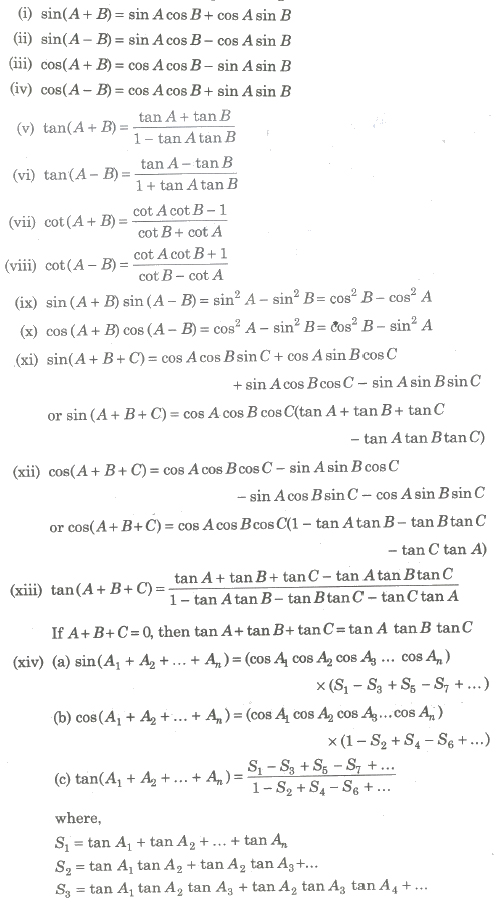
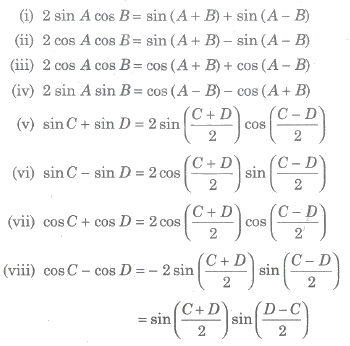
Transformation Formulae
Trigonometric Ratios of Multiple Angles
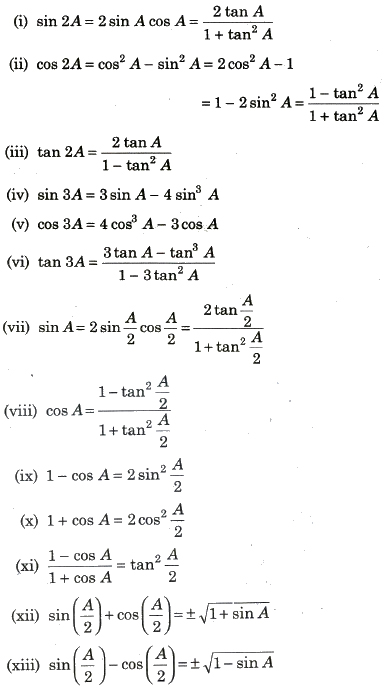
Trigonometric Ratios of Some Useful Angles
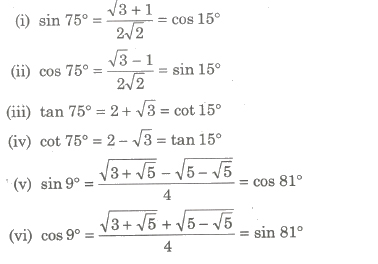
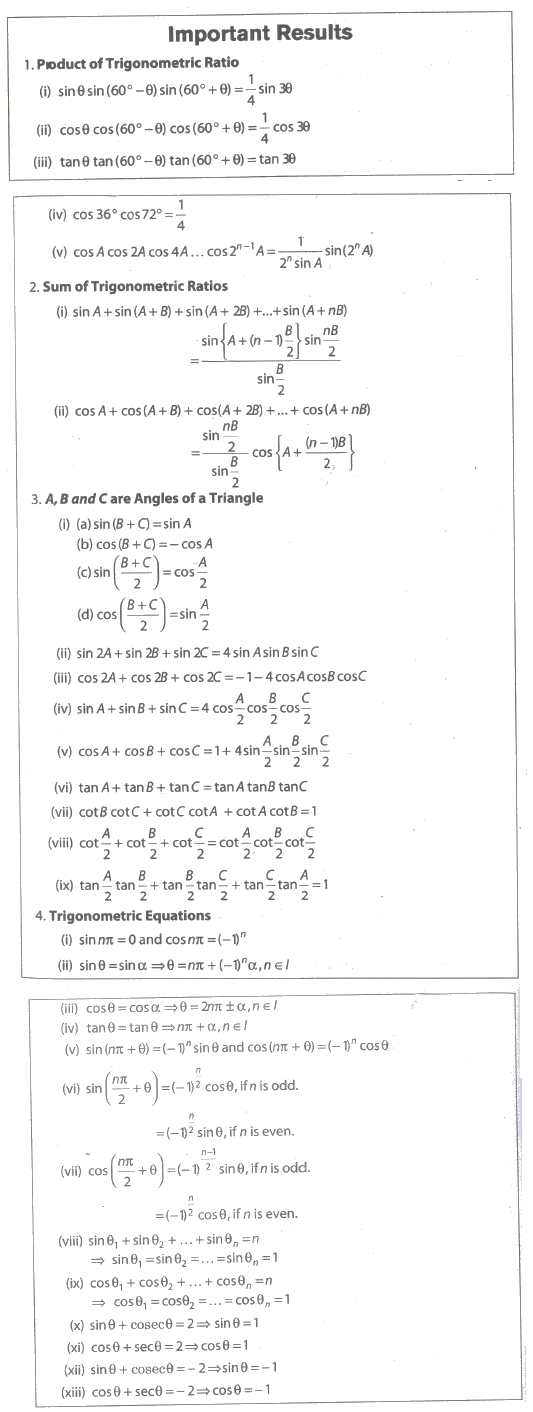
Hyperbolic Functions
The hyperbolic functions sinh , cosh z, tanh z, cosech z, sec h z , coth z are angles of the circular functions, defined by removing is appearing in the complex exponentials.
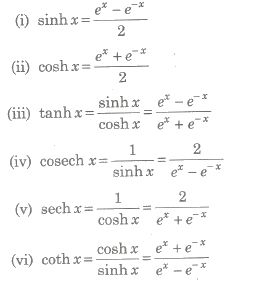
Domain and Range of Hyperbolic Function
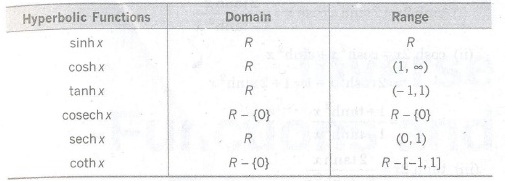
identities
(i) cosh2x – sinh2x = 1
(ii) sech2x + tanh2x =1
(iii) coth2x – cosech2x = 1
(iv) cosh2x + sinh2x = cosh2x
Formulae for the Sum and Difference

Formulae to Transform the Product into Sum or Difference

Formulae for Multiples of x

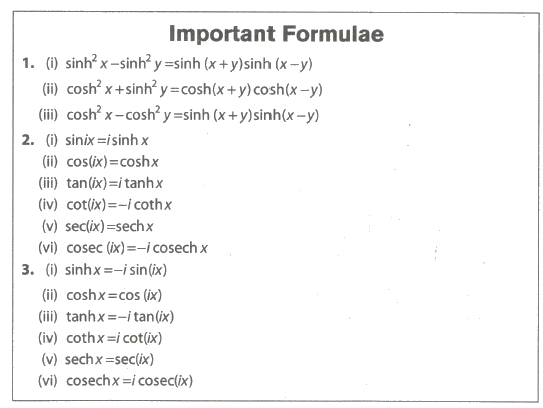
Class 11 Key Points, Important Questions & Practice Papers
Hope these notes helped you in your schools exam preparation. Candidates can also check out the Key Points, Important Questions & Practice Papers for various Subjects for Class 11 in both Hindi and English language form the link below.
Class 11 NCERT Solutions
Candidates who are studying in Class 11 can also check Class 11 NCERT Solutions from here. This will help the candidates to know the solutions for all subjects covered in Class 11th. Candidates can click on the subject wise link to get the same. Class 11 Chapter-wise, detailed solutions to the questions of the NCERT textbooks are provided with the objective of helping students compare their answers with the sample answers.
Class 11 Mock Test / Practice
Mock test are the practice test or you can say the blue print of the main exam. Before appearing in the main examination, candidates must try mock test as it helps the students learn from their mistakes. With the help of Class 11 Mock Test / Practice, candidates can also get an idea about the pattern and marking scheme of that examination. For the sake of the candidates we are providing Class 11 Mock Test / Practice links below.
Class 11 Exemplar Questions
Exemplar Questions Class 11 is a very important resource for students preparing for the Examination. Here we have provided Exemplar Problems Solutions along with NCERT Exemplar Problems Class 11. Question from very important topics is covered by Exemplar Questions for Class 11.
CBSE Notes for Class 11 Maths Biology Notes Physics Notes Chemistry Notes
To get study material, exam alerts and news, join our Whatsapp Channel.

